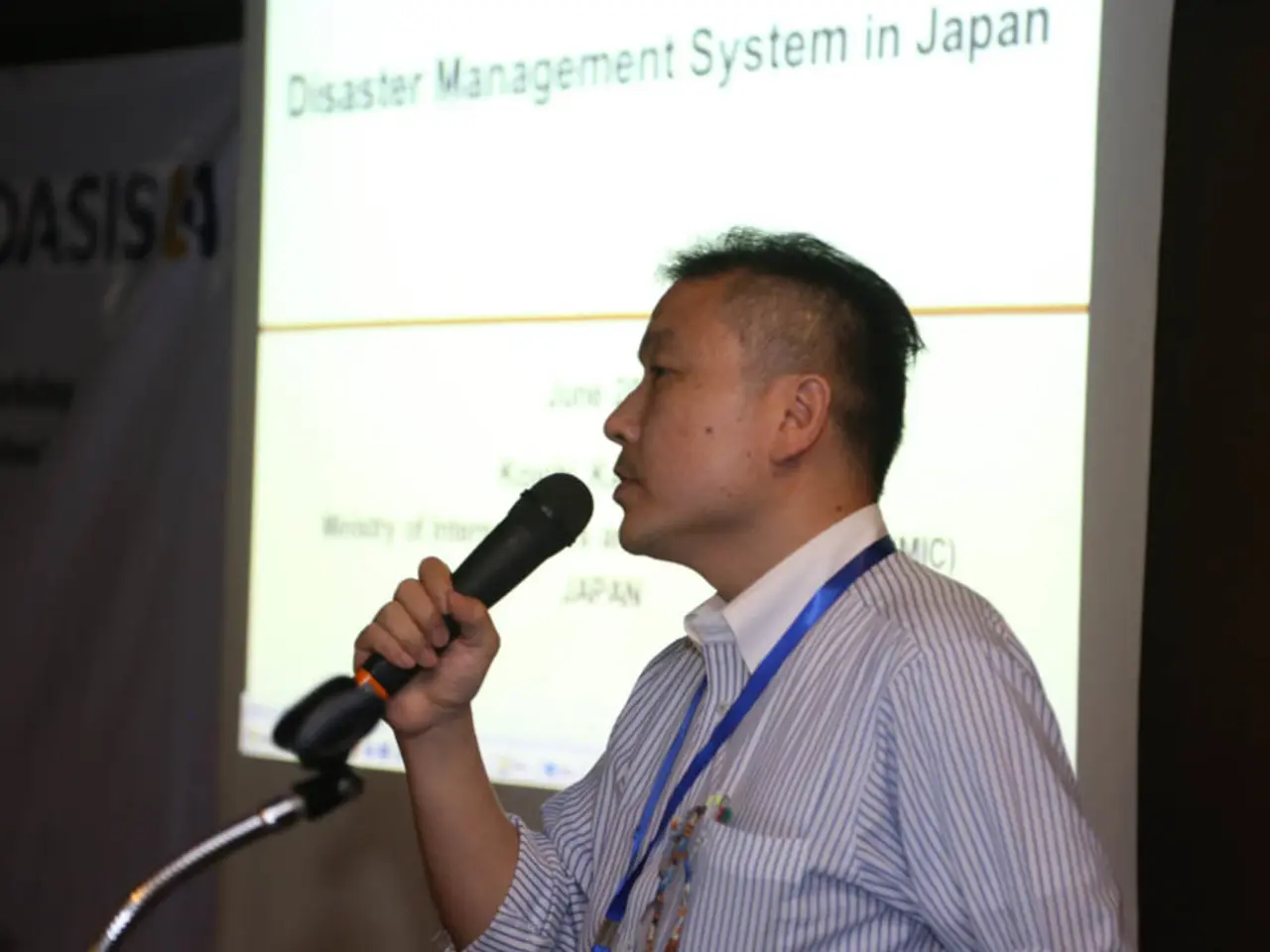Torrential downpour in a South Korean region claims lives of three individuals, marking the area's rainfall record in over a century.
The South Chungcheong province in South Korea has been battling unprecedented flooding this week, with the western Seosan area recording a staggering 114.9 millimetres (4.5 inches) of rain per hour – a level typically seen only once in a century.
The heavy rainfall was driven by warm, moist air flowing along the edge of the North Pacific High, leading to strong atmospheric instability and intense precipitation. Climate change is believed to be a significant factor in the increased frequency and severity of such weather events globally, including South Korea's monsoon floods.
The flooding has had a devastating impact on the region. Seosan has seen markets, apartment complexes, and parked vehicles submerged under water. Orders for evacuation were issued in Hongseong county due to rising water levels from a nearby stream. Tragically, at least three lives have been lost, including a driver whose vehicle was crushed under a collapsed retaining wall, and two elderly individuals who were found dead in flooded basement apartments and near a stream.
More than 1,000 people have been evacuated, and over 300 cases of rain-related damage have been reported. Railway services between Seoul and Daejeon, as well as between Cheonan and Iksan, have been suspended due to the floods.
A nightclub owner in Seosan described the flooding as heartbreaking, with everything in the club floating around. The government and communities will need to adapt by upgrading infrastructure to handle increased rainfall and implementing more robust emergency response systems to minimize casualties and damage.
Scientists warn that the intensification of weather events like this suggests a future with more frequent and severe monsoon seasons in South Korea. Climate change is expected to exacerbate flooding by increasing the volume and intensity of rainfall, posing significant challenges for infrastructure and emergency preparedness.
The death toll in South Korea during summer monsoon periods is typically relatively low, despite regular flooding. However, the events of this week underscore the need for enhanced climate resilience strategies in South Korea. As the world grapples with the impacts of climate change, it becomes increasingly important to invest in measures that protect communities from extreme weather events.
- The heavy rainfall in South Korea's Seosan area, caused by climate change, has been driven by warm air from the North Pacific High, leading to environmentally-stressed markets, apartment complexes, and damaged infrastructure.
- The increased frequency and severity of these weather events, such as floods, are believed to be a consequence of climate-change-induced atmospheric instability, posing critical challenges to South Korea's infrastructure and emergency preparedness.
- To minimize the damage caused by these weather events, it's essential to invest in upgrading infrastructure and implementing more robust emergency systems in the South Chungcheong province, while also supporting the arts and scientific communities in creating climate-resilient solutions.






